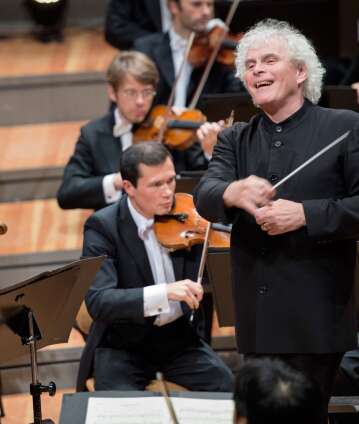Simon Rattle dirige les Symphonies n° 1 et n° 3 de Beethoven

Jouer l’intégrale des symphonies de Beethoven constitue chaque fois une aventure. Les Berliner Philharmoniker et Simon Rattle, dont le dernier cycle Beethoven remonte à 2008, en proposent une nouvelle lecture en octobre 2015. Le coup d’envoi est donné par la Première, qui s’ouvre sur un accord dissonant et laisse pressentir l’originalité caractéristique du cycle entier. Quant à la Troisième, surnommée Eroica, son ardeur combative rompt définitivement avec toutes les normes musicales de l’époque.
Berliner Philharmoniker
Sir Simon Rattle
© 2015 Berlin Phil Media GmbH
Artistes
Nos suggestions
- « Tristan et Isolde » avec Simon Rattle, Eva-Maria Westbroek et Stuart Skelton
- Les Berliner Philharmoniker, Simon Rattle et Karita Mattila aux « Proms »
- Krystian Zimerman et Simon Rattle dans « The Age of Anxiety » de Bernstein
- « Carmen » avec Simon Rattle, Magdalena Kožená et Jonas Kaufmann
- Simon Rattle et Magdalena Kožená à la Waldbühne
- La « Flûte enchantée » de Mozart depuis Baden-Baden